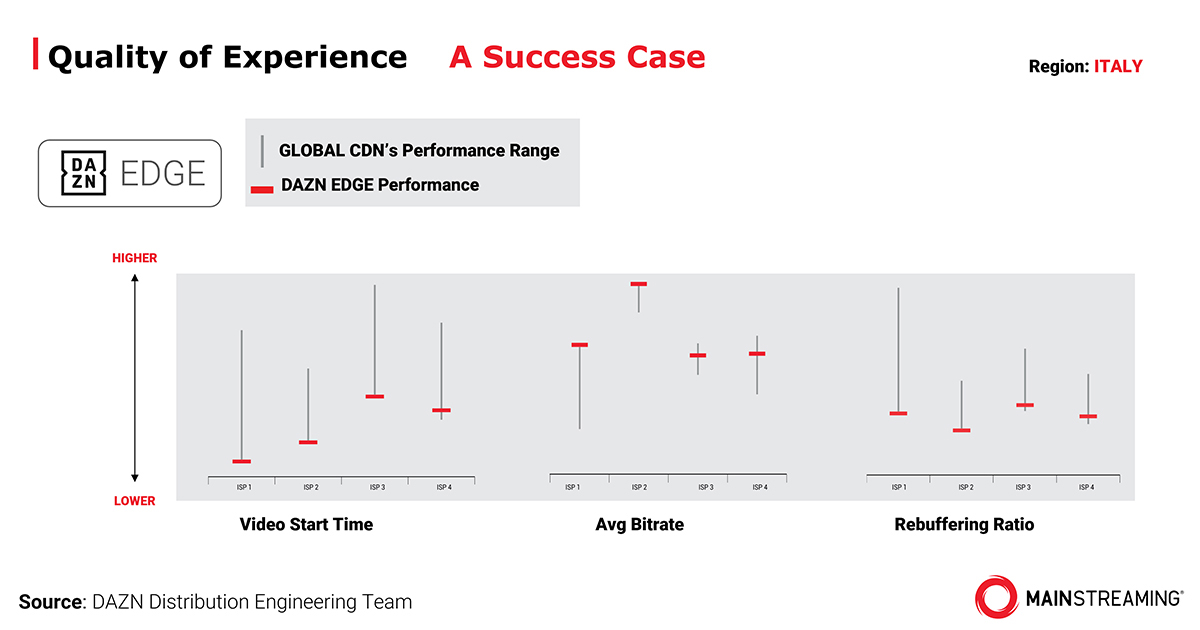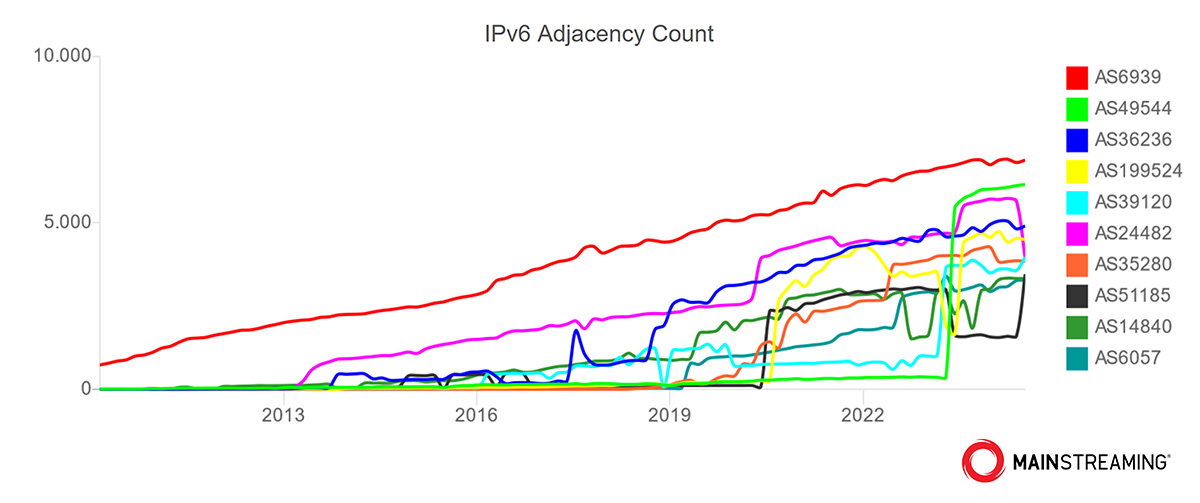DAZN’s Private CDN Deployment Is a Good Use Case for Regional Broadcasters
 The future of content delivery for broadcasters has changed dramatically over the past few years and will continue to do so, especially for live events. Some have predicted that in the next five years, broadcasters will need to deliver TV-sized prime-time audiences, with streaming media technology being the primary means of distribution.
The future of content delivery for broadcasters has changed dramatically over the past few years and will continue to do so, especially for live events. Some have predicted that in the next five years, broadcasters will need to deliver TV-sized prime-time audiences, with streaming media technology being the primary means of distribution.
This means that current peak streaming audiences of about 3-4 million in a country with a population of 65 million will transform into peak audiences of 20-25 million for the same event, using the viewer figures published about the Euros 2024 Football championships as an example. This means that streaming services’ capacity, quality, and security requirements will become dramatically more important for broadcasters in the years ahead.
While I don’t see streaming concurrent viewership of 20-25 million as the norm, at a regional level, we are starting to see some very large concurrent audiences for one-off live events and specific sports matches. DAZN is a good example of a platform that sees large concurrent audiences for Serie A and Spanish LaLiga, where the audiences are large, and the demand for the content is strong.
As part of DAZN’s multi-CDN distribution approach, working with MainStreaming, DAZN built and operates a private CDN-as-a-Service, deployed and managed in close partnership with the largest ISPs in DAZN’s core markets where DAZN Edge is deployed. Not every streaming platform or broadcaster can, or should, build their own CDN; for most, it doesn’t make sense. But in cases like DAZN’s, especially at a regional level, a private CDN-as-a-Service can work well at the core of a multi-CDN strategy.
From a QoE perspective, DAZN says the private CDN has proven its worth, fine-tuning configurations and deployment plans with MainStreaming to ensure the best possible performance to support regional spikes from large audiences tuning in for specific games. The chart above, published in 2023, shows why DAZN’s private CDN at the core of a multi-CDN model provides the base performance it requires.
The internet is constantly in flux as demand on networks fluctuates without notice. Network connections change without warning as ISPs adapt their networks. Yet this ability to change continuously creates different network paths for streaming video to traverse. For example, BGP Routing tables for IPv6 connections (see below) show a general growth trend over time. Still, connection counts have gone down and up quite dramatically, immediately changing how video traverses the internet.
Unlike broadcast, which has standards about QoE, in the streaming industry, there are no agreed-upon definitions of what HD or 4K streaming even means, let alone the term “Broadcast-grade” streaming. I like how MainStreaming defines the term as six key components, and I’m curious to hear in the comments session how others define it:
- Deliver media with consistently high quality and low latency; and
- Scale to many millions of viewers; and
- Achieve predictable delivery costs with economies of scale; and
- Take real-time QoS actions from real-time QoE analytics; and
- Protect against Piracy through CDN-embedded controls; and
- Deliver in Ultra-Low Latency to meet or beat an App’s speed
Broadcast-grade streaming is necessary for broadcasters and streaming platforms to protect their business as they move to a more streaming-first strategy. While this brings new opportunities to engage audiences better and increase revenues, it also brings extra threats to content security, advertising revenue, subscription revenue, and brand reputation. Private CDN platforms will need to adapt to address all those concerns and, in many cases, will need to integrate with other vendors in the video workflow who are specialists in addressing some of those problems.

